1990 Toyota Land Cruiser Service, Tires & Repairs
Get Started
Complete Auto Care for Your 1990 Toyota Land Cruiser
-
TIRES FOR YOUR 1990 Toyota Land Cruiser View Tire Info GET TIRE PRICING
-
REPAIR FOR YOUR 1990 Toyota Land Cruiser View Repair Info SCHEDULE REPAIR
-
MAINTENANCE FOR YOUR 1990 Toyota Land Cruiser View Maintenance Info SCHEDULE MAINTENANCE
-
OFFERS FOR YOUR 1990 Toyota Land Cruiser Limited Time Tire Offers VIEW ALL COUPONS
1990 Toyota Land Cruiser Tires
Recommended Tires | Tire Information
1990 Toyota Land Cruiser Tires Sizes, Speed Ratings, and Inflation
Not sure about your 1990 Toyota Land Cruiser tire size? Use the following chart to find information on tire size, speed rating, and inflation.
| Trim Level | Speed Rating | Inflation in PSI F/R | Tire Size |
|---|---|---|---|
| 1990 Toyota Land Cruiser Base* | None | 29 PSI/29 PSI | P235/75R15 |
| 1990 Toyota Land Cruiser Base* | None | 30 PSI/30 PSI | 31x10.50R15LT/C |
|
1990 Toyota Land Cruiser Base* Speed Rating: None Inflation F/R: 29 PSI/29 PSI |
|
1990 Toyota Land Cruiser Base* Speed Rating: None Inflation F/R: 30 PSI/30 PSI |
* Note: these models have different tire sizes depending on vehicle options.
Recommended Tires for Your 1990 Toyota Land Cruiser
What tires are best for a 1990 Toyota Land Cruiser? Check out the following tire brands and types.
 Blizzak DM-V2
Blizzak DM-V2
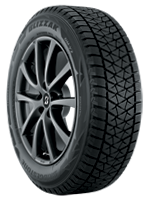
- No warranty
- Winter
- Winter
 Destination A/T2
Destination A/T2
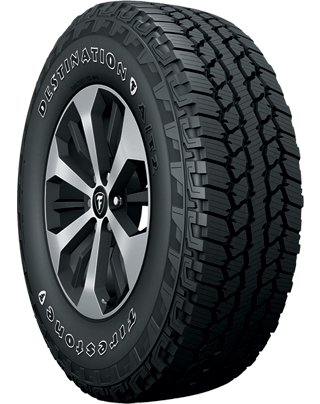
- Gold Pledge Limited Warranty
- All-Season
- Light Truck Tires
 Destination LE3
Destination LE3
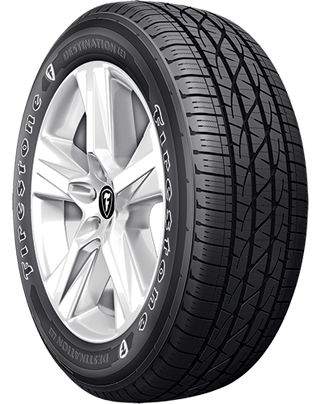
- No warranty
- All-Season
- Light Truck Tires
 Destination M/T2
Destination M/T2
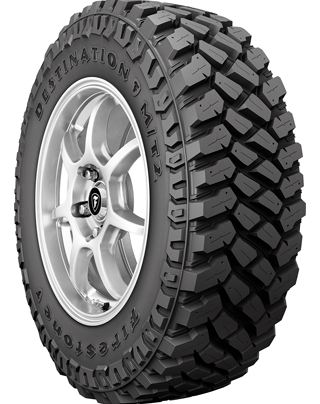
- No warranty
- All-Season
- Light Truck Tires
 Winterforce 2 UV
Winterforce 2 UV
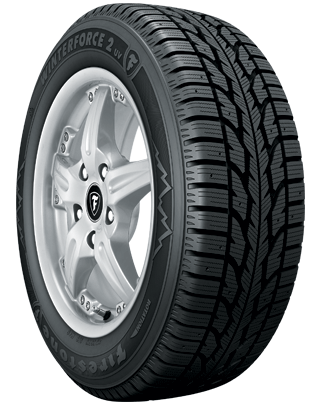
- No warranty
- Winter
- Winter
 Destination X/T
Destination X/T
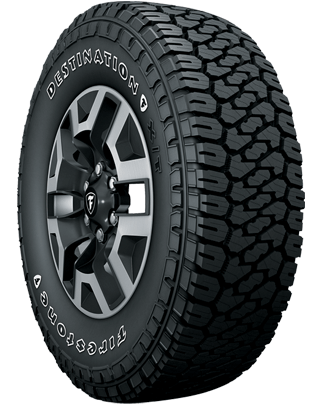
- Gold Pledge Limited Warranty
- All-Season
- Light Truck Tires
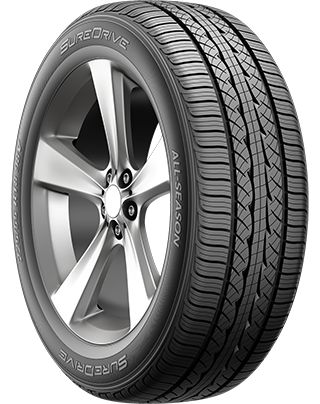
- No warranty
- All-Season
- Passenger Tires
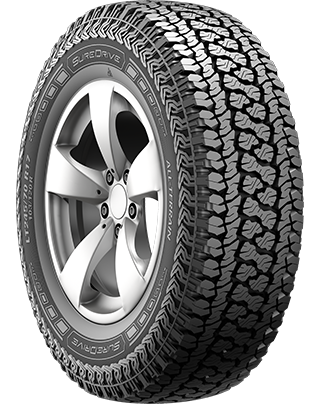
- No warranty
- All-Season
- Light Truck Tires
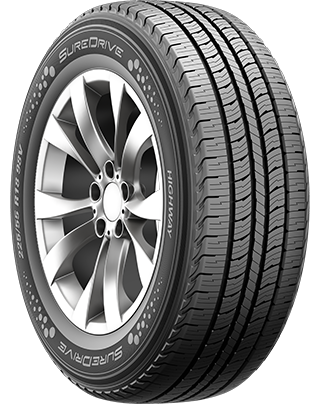
- No warranty
- All-Season
- Light Truck Tires
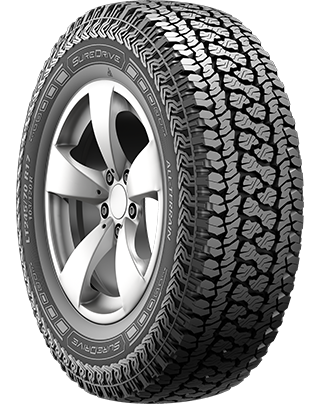
- No warranty
- All-Season
- Light Truck Tires
 Extensa A/S II
Extensa A/S II
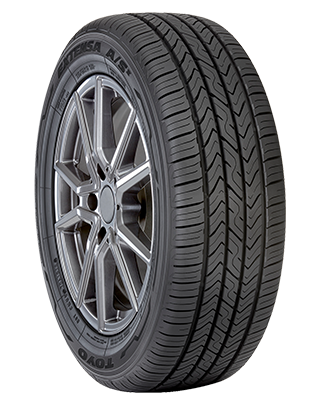
- No warranty
- All-Season
- Passenger Tires
 OPEN COUNTRY A/T III
OPEN COUNTRY A/T III
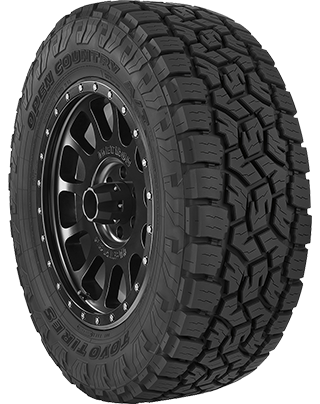
- No warranty
- All-Season
- Light Truck Tires
 OPEN COUNTRY HTII
OPEN COUNTRY HTII
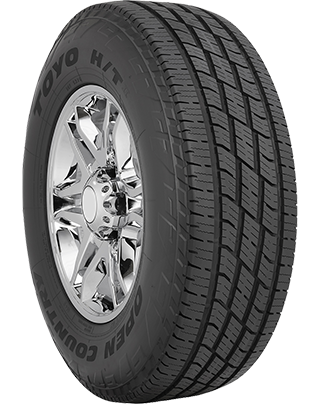
- No warranty
- All-Season
- Light Truck Tires
 OPEN COUNTRY M/T
OPEN COUNTRY M/T
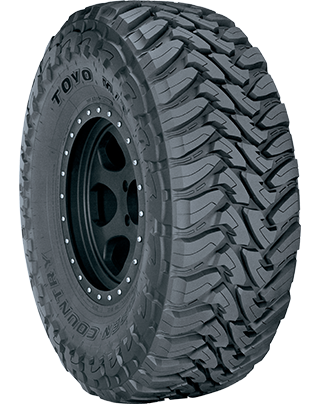
- No warranty
- All-Season
- Light Truck Tires
 OPEN COUNTRY R/T
OPEN COUNTRY R/T
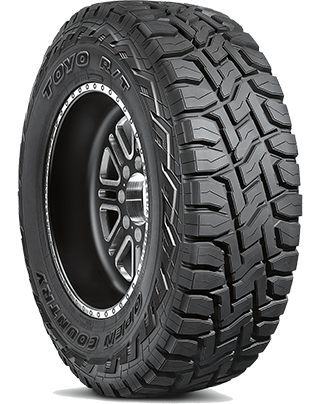
- No warranty
- All-Season
- Light Truck Tires
Choosing 1990 Toyota Land Cruiser Tires
Beyond the correct tire size, there are a couple of other factors to consider when buying Toyota Land Cruiser tires like how and where you drive, and how much you want to spend. When thinking about your driving conditions, consider where you live (mountains vs. city vs. countryside) and the kind of weather can catch you off-guard. (Watch out Tornado Alley!) Many drivers who live in states that experience all four seasons choose to purchase two sets of tires: one set for winter, one set for summer. Other drivers prefer the convenience of all-season tires. They make one trip to the tire shop and they're pretty much ready for rain, light snow, or sun!
Your personal driving style is the next factor to consider. If you're a big off-roading fan who forges paths where others can't, you have very different needs than a long-distance commuter who sticks to the highway. Visit your local Firestone Complete Auto Care for help selecting the tire that's right for you, or get started by browsing tires that fit your Toyota Land Cruiser.
1990 Toyota Land Cruiser Tire Installation & Rotation
We sell tires, but we also service them and care for all the around-the-wheel components. We're a tire store that also offers professional tire installation, maintenance, and rotation, along with complete auto care. We make it easy to buy new 1990 Toyota Land Cruiser tires online and book an installation appointment at the same time.
1990 Toyota Land Cruiser Tire Questions
-
Why does Toyota tire inflation matter? Even a tiny decrease in tire pressure could impact your safety and fuel economy. Maintaining proper tire pressure can help increase fuel economy, improve braking time, and boost tire lifespan.
-
What do the tire sidewall numbers mean for my Toyota Land Cruiser? Your tire sidewall numbers tell you the recommended load carrying capacity, speed rating, treadwear, traction, and tire size. Talk to a tire technician to learn how to read Toyota tire numbers.
-
Is there an easy way to check Toyota tire tread depth? Stay on top of your tire tread depth to help avoid a dangerous drive. You can check tread depth with a penny. Hold the penny so that Abraham Lincoln is facing you, then place your penny into a tread groove upside down. If you can see the top of Abe’s head, your tread is shallow and it might be time for new Toyota Land Cruiser tires. Grab a penny. Hold the so that Abe Lincon's head is facing you and his hair is pointing toward the ground. Then, place the penny into a tread groove. If you can see the top of Abe’s head, your tread is shallow and it might be time for new Toyota Land Cruiser tires.
1990 Toyota Land Cruiser Repair
Want more details? Choose a service below to read more about Toyota Land Cruiser repairs at Firestone Complete Auto Care.
About 1990 Toyota Land Cruiser Repairs
Car repairs: for many drivers, that phrase is a dreadful one. But at Firestone Complete Auto Care, we strive to give you the excellent repair experience you deserve. When it’s time for 1990 Toyota Land Cruiser repair services, head to your nearest Firestone location and our technicians will take care of your Land Cruiser like it was their own. Before we begin any repair work, we’ll diagnose any issues and answer your questions about potential repair options. If a repair isn't necessary, we won't recommend it.
What Will Toyota Land Cruiser Repairs Cost?
Several factors can affect the cost to repair your 1990 Toyota Land Cruiser, including what kind of repair you need, prices of appropriate replacement parts, the amount of labor necessary to get the job done, and your locale. They're updated regularly!
A few different aspects can influence repair costs for your 1990 Toyota Land Cruiser, like
1990 Toyota Land Cruiser Auto Repair Q&A
-
Do I need to follow Toyota's maintenance schedule? Don’t neglect scheduled maintenance. Sure, you could skip out on a few recommended maintenance services, but you may pay the price later. Bring your vehicle to Firestone Complete Auto Care at recommended service intervals to address minor issues before they get out of hand and keep your car running newer, longer.
-
Should I bring my Toyota in even if I can't pinpoint the problem? You’re in your car, day in and day out. So, it’s only expected that you know your car better than anyone else! If you notice mysterious smells, strange engine noises, or other out-of-the-ordinary symptoms while driving, trust your instincts and stop into Firestone Complete Auto Care for a Courtesy Check. Catching a potential issue early could help prevent Toyota Land Cruiser repairs.
-
Do I have to get the repairs you recommend for my Toyota? We won’t recommend a service or repair for your 1990 Toyota Land Cruiser unless we think it’s necessary to keep you safe. Want to know more about a specific recommended repair? Ask! We’re here to help.
Brake Repair for Your 1990 Toyota Land Cruiser
Your Toyota Land Cruiser engine may be strong and reliable. But if you can’t stop it, it’s as good as scrap metal. Don't wait if you're experiencing brake squeaks or a loss of braking power. Safe driving is difficult when your brakes are anything but their best. Plus, waiting can lead to more expensive parts wearing out and requiring replacement. Visit Firestone Complete Auto Care for the right brake repair for your 1990 Toyota Land Cruiser. We offer a variety of brake services like brake pad/shoe removal and replacement, brake rotor/drum machining, brake fluid exchange, and wheel cylinder and brake caliper installation.
Toyota Land Cruiser Brakes Questions
-
What is causing my Land Cruiser to shake when I brake? Faulty brake calipers, worn brake pads or rotors, loose or worn suspension parts, and warped rotors can cause your Land Cruiser to shake during braking. If you’re experiencing odd brake behavior, schedule a free brake inspection at a nearby Firestone Complete Auto Care.
-
How long can I expect my Land Cruiser brake pads to last? In general, brake pads can last from 30,000 to 40,000 miles. Certain factors, like driving on highways mostly and braking smoothly, can help your brake pads last longer. Hauling heavy loads and riding your brakes can shorten brake pad lifespan.
-
Is it bad if my Land Cruiser is leaking brake fluid when off? Your Land Cruiser brake system is a closed hydraulic system, so a brake fluid leak likely means you have an issue in your brake system. Over time, brake components can wear out or get damaged, causing a brake fluid leak.
Repairing Your Toyota Land Cruiser Drivetrain
You don't want to go to just anyone for drivetrain repair. Drivetrains for front, rear, and all-wheel-drive and 4WD vehicles are all different. You want to go to Firestone Complete Auto Care. We can take care of most 1990 Toyota Land Cruiser drivetrain components Your Toyota could be crying out for driveshaft repair if you notice resistance when turning, heavy vibrations in your floorboards, clunks when shifting, or vibration as your vehicle accelerates.
1990 Toyota Land Cruiser Drivetrain Q&A
-
What are the symptoms of a damaged Toyota drivetrain system? Noises toward the back of your Toyota Land Cruiser, leaking fluid, trouble turning — these could all be signs of drivetrain damage you want to address. Take action before something more severe happens.
-
Why is the malfunction indicator light (MIL) on in my Land Cruiser? Engine problems, transmission problems, faulty sensors, electrical issues, misfire issues, and connector problems could all cause your Land Cruiser’s malfunction warning light, or better known as the check engine light, to illuminate.
-
How worried should I be about a drivetrain malfunction in my Land Cruiser? If you experience a drivetrain malfunction in your Land Cruiser, it is important to have it inspected by a professional mechanic as soon as possible to identify the underlying cause and perform the necessary repairs. Driving with a malfunctioning drivetrain can be dangerous and cause further damage to your car.
1990 Toyota Land Cruiser Alignment Services
An alignment involves making adjustments to your Toyota Land Cruiser's suspension system, which serves to attach your wheels to your vehicle. During the service, calculated changes are made to the angles of your tires. This is so that your tires hit the road at an optimal angle for your vehicle’s performance — just as Toyota intended. Before we adjust the alignment of your 1990 Toyota Land Cruiser, we’ll start by checking the current alignment angles. Then, we’ll adjust the angles as needed until they match recommended measurements from Toyota.
Toyota Land Cruiser Alignment Questions
-
How can I avoid knocking my Toyota Land Cruiser out of alignment? Hitting a pothole or curb can alter your wheel alignment. So can general wear and tear over time.
-
How often should you get a wheel alignment for your Land Cruiser? Check your Land Cruiser owner's manual for Toyota's recommended interval. It's generally a good idea to check your alignment every 6,000 miles or 6 months, depending on which comes first.
-
Do you need to get your Land Cruiser wheels aligned? It’s likely not a requirement to get an alignment when you install new tires on your Land Cruiser, but it's a smart idea to do so anyway. An alignment can help ensure even tire wear, smooth handling, and better fuel efficiency.
1990 Toyota Land Cruiser Engine Services
When your Toyota Land Cruiser engine needs repairs, our technicians will make sure you understand what’s going on before they start working on your engine. We don't start working until we have your approval. If a repair isn’t urgent right now, we’ll let you know. If it's necessary for your safety, we'll make sure you understand that, too. We seek to give you all the info you need to make a smart decision about our services. Choose Firestone Complete Auto Care for Toyota Land Cruiser engine repairs and you can feel good knowing that we only use Toyota-compliant replacement parts such as the serpentine belt, motor oil seal, sensors, or a different component.
Engine Q&A 1990 Toyota Land Cruiser
-
Why does my Land Cruiser’s check engine light come on when I start it? Generally, your check engine light turning on upon ignition is not a bad thing. It’s just your Land Cruiser firing up its circuits. The light should turn off in a bit, but come see us if it doesn't.
-
Are Toyota Land Cruiser engine noises bad? Unusual noises can signal a problem with your Toyota Land Cruiser engine. Tapping or knocking could mean you're low on oil. Whistling could mean a belt is misaligned or there's an intake leak. Squealing can indicate a loose fan belt, and grinding might be coming from the brakes, not the engine.
-
Are you unknowingly damaging your Toyota Land Cruiser engine? Certain driving habits can damage your engine and should be avoided. These habits include 'running on fumes,' revving the engine while still in Park, or pushing 'the pedal to the metal' before the engine has warmed up. Help sustain your engine’s performance and efficiency by staying miles away from these bad driving practices.
Tire Repair for Your 1990 Toyota Land Cruiser
Firestone Complete Auto Care is here for you when your 1990 Toyota Land Cruiser needs flat tire repair or inspection. Our tire technicians can determine whether it's safe to plug and patch the tire, or whether it needs to be replaced. We’ll begin by taking a look at where the damage is, the type and extent of the tire damage, and how all of your tires are wearing.
If a repair on your 1990 Toyota Land Cruiser tire is feasible and safe, the repair process is actually fairly simple: (1) Remove the tire from the wheel for inspection and repair, (2) fill in the area that’s been punctured to prevent damage from moisture, and (3) seal the inner liner with a repair unit to prevent air loss.
Toyota Land Cruiser Tire Repair Questions
-
Can I drive my Toyota on a flat tire? A flat tire that’s not addressed can take a terrible toll on the rest of your car. Until you have it repaired or replaced, drive your Land Cruiser as little as possible to reduce your risk of damage to the wheels and alignment – or further damage to that already struggling tire!
-
Is temporary sealant bad for my Toyota's tires? Fast fixes are a mixed blessing. They’ll help you get your Toyota Land Cruiser to Firestone Complete Auto Care, but don’t count on them to keep you on the road for very long. Using a temporary sealant may also void a Bridgestone or Firestone tire warranty.
-
Why do the tires on my Land Cruiser keep losing air? Your Land Cruiser tires might keep losing air due to a leaking valve stem, puncture or hole in the tire tread or sidewall, or damaged wheel.
1990 Toyota Land Cruiser Maintenance
Take care of your Toyota Land Cruiser and it'll take care of you. With the right maintenance at the right time, your Land Cruiser has a good chance of hitting 200,000 miles or more.
About 1990 Toyota Land Cruiser Scheduled Maintenance
It can be overwhelming, but fortunately, there’s a resource that takes the guesswork out of routine Land Cruiser maintenance. Rely on the recommended maintenance schedule that’s been created just for your 1990 Toyota Land Cruiser! Toyota knows your vehicle inside and out (they made it, after all!), so they’ve designed this schedule with your car’s unique needs in mind. Scheduled maintenance services can vary depending on driving conditions, climate, and other factors; in most cases, though, recommended maintenance will consist of services like tire rotations, vital fluid checks/exchanges, filter changes, brake pad replacement, and oil changes. Scheduling routine service appointments is one of the best ways to help extend your Land Cruiser's life, keep you safer on the road, and maybe even save you the headache of dealing with common 1990 Toyota Land Cruiser problems in the future.
Overview of Essential Toyota Land Cruiser Maintenance Needs
Come to Firestone Complete Auto Care for manufacturer-recommended routine maintenance on your 1990 Toyota Land Cruiser and a skilled technician will start the appointment with a Courtesy Check. This Courtesy Check can establish a baseline of what may need to be addressed during your service appointment. Every Courtesy Check will include a visual inspection of your Land Cruiser. We’ll check your head and tail lights, fluid levels, filters, tires (and their alignment!), and windshield wiper blades. We’ll also perform a free battery check to determine your battery’s charge level.
Firestone Complete Auto Care is the place to go for 1990 Toyota Land Cruiser maintenance. So visit us regularly, or visit us urgently. Many locations are open on weekends and in the evening.
Questions About 1990 Toyota Land Cruiser Maintenance
-
When should I have Toyota Land Cruiser alignment checked? Check your car for pothole damage! If you’ve recently hit a pothole (or even if you don’t remember hitting one… they can be sneaky!) check your tire treads, tire sidewalls, and wheels for damage. Potholes can also knock your car out of alignment, so have your alignment checked if you suspect you’ve driven over a rough patch of road lately.
-
When does my Toyota Land Cruiser need high mileage oil? If your Toyota Land Cruiser has ticked past 75,000 miles, consider switching to high mileage oil at your next oil change to give your engine what it needs to go another 75,000 (or more!). High mileage oil: make it a high priority!
-
Can Toyota dashboard warning lights wait? It's better to get them addressed as soon as possible. An illuminated dashboard light means something in your vehicle isn't functioning like it should. Letting problems linger can mean bad news for your Toyota Land Cruiser, so be sure to take your car in for service as soon as you notice an illuminated dashboard light.
1990 Toyota Land Cruiser Battery Replacement & Size
Need more info about Toyota Land Cruiser batteries?
| Battery | Engine | Warranty | Cold Cranking Amps | |
|---|---|---|---|---|
| 27-3 | L6/4.0L | Replacement 24 months | Performance months | 810 |
1990 Toyota Land Cruiser Batteries
Generally, car batteries last from three to five years. You want to replace your 1990 Toyota Land Cruiser battery before it fails and leaves you stranded. Pay attention to clues that your battery is on its way out. A lagging starter, an illuminated check engine light or battery signal, swollen battery case, corrosion-covered posts, or dim headlights may all indicate that your battery is on its last leg.
You can also get a Free Battery Test at your local Firestone Complete Auto Care. Visit us for a complimentary battery check and, if needed, get your Toyota Land Cruiser a replacement battery. Automotive batteries are just one of our many areas of expertise. Our technicians are well-acquainted with Toyota’s service specs for Land Cruiser battery CCAs and reserve capacity. Get help choosing the battery size that fits your car perfectly, and schedule an appointment today for a quick car battery replacement.
Answers to Your Toyota Land Cruiser Car Battery Questions
-
Why doesn’t my Toyota Land Cruiser battery stay charged? A battery that won't hold a charge is almost as good as dead. The battery might be old. Or, you may have a habit of leaving your car doors open and the lights on overnight. Stop by for a free battery test at your local Firestone Complete Auto Care to learn more about the state of your battery.
-
What is the average lifespan of a car battery? Car battery lifespan varies depending on a few factors, including driving conditions, accessories, how well it’s maintained, and the type of battery. On average, a car battery lasts about three to five years.
-
What is the white, crusty stuff around my Land Cruiser’s battery post? The white, flaky stuff that can build up around your Land Cruiser’s battery terminals is known as corrosion. Acid leaking from your vehicle’s battery post can have a chemical reaction with the air, leading to an accumulation of the white, powdery substance over time. Corrosion can affect the flow of electricity between your battery and the electrical system in your Land Cruiser, possibly causing issues with electrical performance and starting. If left unaddressed for long enough, it may even cause your battery to prematurely fail.
Oil Changes for 1990 Toyota Land Cruiser
Toyota recommends having your 1990 Toyota Land Cruiser’s motor oil changed at regular intervals. Outside of Toyota-recommended oil change intervals, your Land Cruiser may need an oil change if your check engine light is on, you hear knocking sounds coming from the engine, sense an oil smell in the cabin, or notice excess vehicle exhaust. You might need an oil change more frequently than what’s recommended by Toyota if you regularly haul heavy loads, drive in dusty areas, go off-roading a lot, or go at low speeds on long distance trips.
Your local Firestone Complete Auto Care has the right 1990 Toyota Land Cruiser motor oil: either synthetic or conventional. Talk with a teammate and consult your owner's manual before picking a motor oil. At Firestone Complete Auto Care, you can choose from the following oils: Quaker State® Advanced Durability™ conventional oil, Pennzoil® High Mileage Vehicle® motor oil, Pennzoil Platinum® Full Synthetic motor oil with PurePlus™ Technology, and Shell Rotella® heavy-duty engine oil. In an oil change service, a technician will change your Land Cruiser's oil, replace and recycle the old oil and filter, check all of your other filters, refill vital car fluids, and perform a courtesy inspection on your entire vehicle. Make an appointment for an oil change service today and let the oil experts take care of your Land Cruiser's engine.
Oil Change Q&A for Your 1990 Toyota Land Cruiser
-
Why is the oil light on in my Toyota Land Cruiser? The oil change light in your Toyota Land Cruiser could be triggered by an overdue oil change. However, if the oil pressure light is on, you may be dealing with low engine oil, a failing oil pump, a clogged oil filter, or a malfunctioning oil pressure sensor.
-
How hard is it to change Toyota Land Cruiser oil at home? Changing your own oil isn't as convenient as you might think. It requires special tools and old oil must be disposed of properly. Having your oil professionally changed reduces the chances of something going wrong with the oil change, but also with your vehicle down the road.
-
Why is my Toyota Land Cruiser exhaust smoke grayish or blue? Your engine could be burning oil due to a leak. It may be time for a pro to take a look. A leak can be caused by a variety of issues including faulty valve seals, blown piston rings, or damaged cylinder walls.
1990 Toyota Land Cruiser Tune-Up & Engine Service
Regular engine tune-ups can optimize your Land Cruiser’s power on the road. Your local Firestone Complete Auto Care offers a range of engine tune-up services for your 1990 Toyota Land Cruiser. One option is the standard Firestone Tune-Up. This includes the installation of new spark plugs and a visual inspection of your engine’s components, plus a lifetime warranty on parts*. Another service option pays special attention to the filters in your Land Cruiser. Specifically, we replace the fuel filter and air filter. Our third service is a thorough cleaning of the fuel system. During this type of tune-up, we use a three-step process to get rid of harmful varnish, dirt, and carbon deposit buildup in your Land Cruiser’s fuel injectors, throttle body, and throttle plate. This goes a long way in boosting your fuel system’s overall performance. Consider this when choosing a tune-up service for your Land Cruiser: your vehicle’s maintenance record and mileage can determine which service is best. Talk to a technician about your driving style, mileage, and service history to learn more about your vehicle's specific needs.
*Check with a teammate at Firestone Complete Auto Care for complete terms and conditions regarding warranties.
Common Engine Tune-Up Q&A for 1990 Toyota Land Cruiser
-
When should Toyota Land Cruiser spark plugs be replaced? Replace spark plugs on time or about every 30,000 miles or so. Spark plugs are small but mighty. The spark of electricity that the plug emits across a small gap creates the ignition for the combustion needed to start your car. Without that spark, your car won't start.
-
What should I do if I see leaks under my Land Cruiser? Don't ignore puddles of fluid under your Toyota Land Cruiser. It could signal a coolant leak, brake fluid leak, or an oil leak. Let any one of these leaks linger and it could cause engine damage.
-
How often do Toyota Land Cruiser fuel injectors need to be cleaned? The cleaning schedule for vehicle fuel injectors varies depending on your driving conditions and the type of fuel you use. Some manufacturers suggest cleaning your fuel system as part of routine maintenance, while others will recommend it on an as-needed basis if you’re experiencing poor performance. Reference your Toyota owner’s manual for exact guidelines.
1990 Land Cruiser Toyota Steering & Suspension Services
When you first bought your 1990 Toyota Land Cruiser, you probably enjoyed a smooth and steady ride. But these days, things are starting to feel a bit rough. Maybe your Land Cruiser bounces, drifts to one side, or makes an unusual noise when going over a speed bump. The first sign of trouble is the best time to bring your 1990 Toyota Land Cruiser in for steering and suspension services. We’ll get to the source of your car problems and, if your Land Cruiser suspension system needs repair, we’ll go over the services you need and how much they will cost before we do any work.
1990 Land Cruiser Steering & Suspension Q&A
-
Why is my Toyota Land Cruiser bouncing so much? Excessive bouncing in your Toyota Land Cruiser might be due to damaged struts or shocks that are unable to absorb road bumps effectively, causing your vehicle to feel more like a pogo stick than a smooth ride.
-
Why does my Land Cruiser's nose dive down when I hit the brakes? The forward momentum and weight transfer to the front wheels during braking can cause your Land Cruiser's front end to dip forward. A damaged or faulty suspension system may fail to distribute the weight and force effectively, causing the front end to dip even more.
-
Does treadwear and tire pressure impact my Land Cruiser's steering and suspension? Keeping your tires properly inflated can help reduce strain on the suspension, and also help you notice when you need new tires. A tire that doesn't have an adequate amount of tread can't grip the road or function as well as the manufacturer intended.
Convenient & Local 1990 Toyota Land Cruiser A/C Service
Our technicians will work to solve your 1990 Toyota Land Cruiser A/C problems to the best of their ability. During an A/C performance check, we'll determine the condition of your 1990 Toyota Land Cruiser A/C system to see if repair work is required. This check includes a visual inspection, performance test, and pressure and leak test.
Let's say we repair your 1990 Toyota Land Cruiser A/C system. We will also perform an A/C evacuation and recharge. During this process, a technician will remove the old refrigerant from the A/C system. Then, they’ll perform an evacuation (also known as a discharge) on the entire system per Toyota guidelines. To finish, we’ll add new refrigerant to recharge the A/C system.
Frequently Asked Questions for 1990 Toyota Land Cruiser A/C Systems
-
Why is my Land Cruiser A/C blowing hot air? Maybe your A/C starts cool but then gets warm. Or maybe it never gets cold in the first place. Either way, your A/C troubles could be traced back to a clogged expansion valve, faulty compressor clutch, blown fuse, or leak.
-
How does my A/C system get a leak? To put it simply, age and moisture are some of the main causes of leaks in your A/C. Over time, rubber gaskets and seals can wear out, which pushes much-needed refrigerant out of your Land Cruiser’s A/C system — and lets outside moisture get in, which can take a toll on internal A/C components.
-
Why does my Land Cruiser’s A/C only work when the car is moving? A problem with one or more of your air conditioning or electrical system components could cause the A/C to only work when your Land Cruiser is moving. You may be low on refrigerant, or the cooling fan could be faulty.
Transmission Services for 1990 Toyota Land Cruiser
The transmission delivers power from the motor to your wheels so that you can drive at your desired speed. Because of the transmission’s responsibility to translate the right dose of power into the right amount of speed, a tiny transmission issue can take a major toll on your car’s performance. Toyota Land Cruiser transmission problems can present themselves as shifting delays, grinding or jumping during acceleration, the car shaking on the road, or a burning smell or whistling sounds coming from under the hood. If you don’t pay attention to Toyota Land Cruiser transmission trouble your could suffer a loss in fuel efficiency or find that your Land Cruiser isn’t working at all. Our expert techs are familiar with 1990 Land Cruiser services and perform them according to Toyota-recommended specifications. Schedule an appointment at your local Firestone Complete Auto Care at the first sign of transmission problems to help diagnose, treat, and prevent major transmission issues.
1990 Toyota Land Cruiser Transmission Questions & Answers
-
Does my Land Cruiser's transmission fluid need to be inspected? Caring for your Toyota Land Cruiser’s transmission fluid is a great way to help it perform. About every 30,000 to 60,000 miles is a good timeframe for having your transmission fluid inspected and perhaps changed. Service intervals can vary depending on how you use your Toyota, so check with your technician first. Luckily, leaks and low fluid levels are easy to spot and inexpensive to fix.
-
Can Toyota Land Cruiser transmission fluid leak? Over time, transmission fluid can leak from your Toyota Land Cruiser, potentially causing transmission problems. A transmission fluid leak may be caused by a damaged transmission pan, faulty transmission cooler lines, worn-out seals, a cracked transmission housing, or an overfilled transmission.
-
Should I avoid driving my Toyota Land Cruiser if there is a transmission fluid leak? It’s not advisable to drive your Land Cruiser if it’s leaking transmission fluid. Your transmission system needs transmission fluid to function properly, and a leak can lead to significant problems, such as overheating or reduced performance. You might even experience transmission failure.
1990 Toyota Land Cruiser Inspections
Every service performed at Firestone Complete Auto Care includes a multi-point Courtesy Check. To start, one of our technicians will check the battery in your Toyota Land Cruiser to see how much charge it has left – and determine if it may fail in the near future. We’ll follow the battery inspection with a visual check of your Toyota Land Cruiser’s lights, windshield wipers, filters, hoses, alignment, tires, fluid levels, and belts.
Every service performed at your nearest Firestone Complete Auto Care will include a Courtesy Check, but you can also request a Complete Vehicle Inspection for your 1990 Toyota Land Cruiser if you suspect there may be a bigger problem. A Complete Vehicle Inspection includes everything in a Courtesy Check, plus a thorough manual inspection of your steering, suspension, brakes, and exhaust system. The goal of this type of inspection is to unearth significant issues that might require preventative maintenance.
In some cities or states, you may be able to take care of your state inspection or safety test at your local Firestone Complete Auto Care. Specific requirements for these types of inspections vary by state.
Common 1990 Toyota Land Cruiser Vehicle Inspection Questions
-
When does my Toyota Land Cruiser need an inspection? You drive your car, day in and day out, so you know it best. If you notice unusual engine noises or you can’t shake the feeling that something is 'off,' start with a Courtesy Check to stay ahead of potential issues.
-
My 1990 Toyota Land Cruiser failed the state inspection test. Can you fix it? Did your vehicle fail a recent state inspection test? We can help. Come in for a checkup and we’ll diagnose the issue.
-
When’s the best time to have a complete vehicle inspection performed on my Toyota Land Cruiser? You should bring your Toyota Land Cruiser in for a full vehicle inspection if something weird happens and you can’t find the problem. A new dashboard light might come on, you may hear strange sounds under the hood, or your steering might feel off. A complete inspection is also a great idea before a road trip for added peace of mind.
1990 Toyota Land Cruiser Radiator Service
Regular, proactive service on the radiator in your 1990 Toyota Land Cruiser is crucial to keep your engine in the best possible shape for years to come. In fact, Toyota recommends replacing coolant/antifreeze at specific intervals, but you can also take note of any signs your radiator is going bad. You might be driving around (or about to be stranded) with a failing radiator if you see coolant leaks under your car, high engine temperatures, or a dashboard light that indicates low coolant.
If you bring your vehicle to Firestone Complete Auto Care, we start with a comprehensive inspection of your Toyota Land Cruiser’s cooling system. Then, we’ll move on to a machine-powered coolant exchange. Finally, we’ll refill the flushed sealants, lubricants and chemicals, then do a pressure check to catch any possible leaks. From the radiator cap to the heater core, we’re here to give your 1990 Toyota Land Cruiser the top-notch service it needs.
Questions About Toyota Land Cruiser Radiators
-
What does the coolant light on my Toyota dashboard mean? f the coolant light illuminates on your dashboard, your engine could be overheating. Pull over to a safe area and wait for the engine to cool down. Then, head to your nearest Firestone Complete Auto Care for a coolant system check.
-
What is causing my Land Cruiser to overheat? Your Toyota Land Cruiser engine could overheat due to low coolant, a clogged radiator, a damaged water pump, a malfunctioning cooling fan, or a faulty thermostat.
-
My Land Cruiser radiator sounds like it's rumbling or boiling! What's up? If your radiator sounds like it's boiling or rumbling, you could have air pockets in the cooling system of your Land Cruiser. You might also have a damaged radiator cap (super easy to fix!) or a clogged radiator.